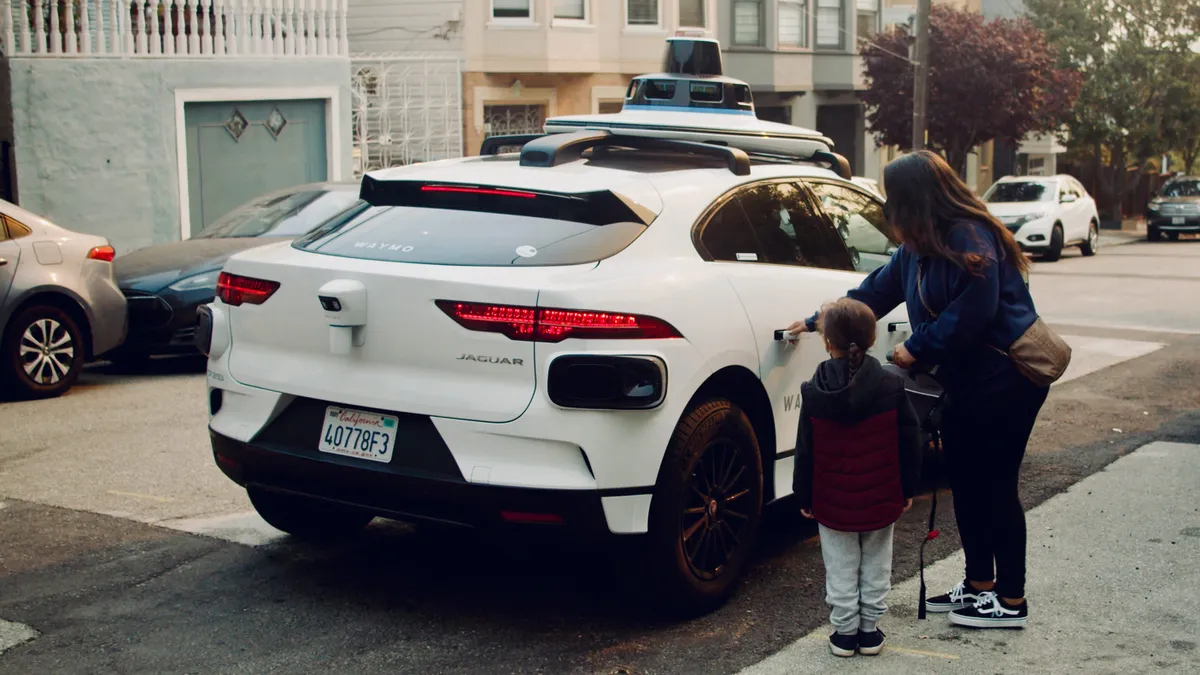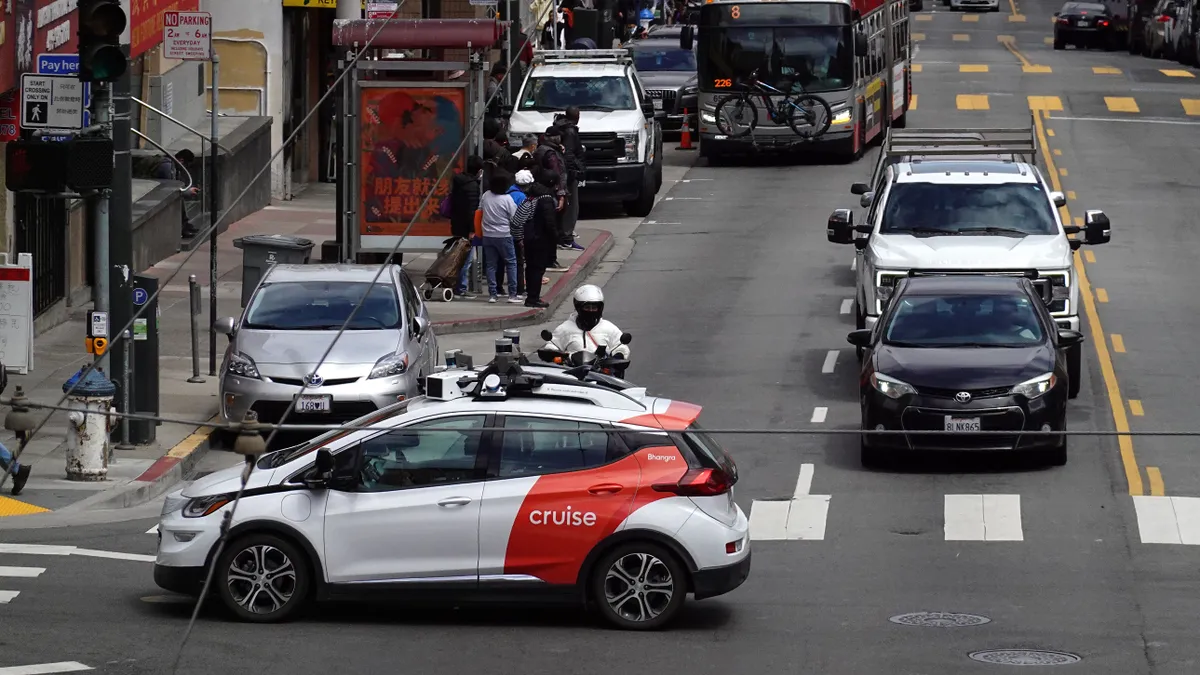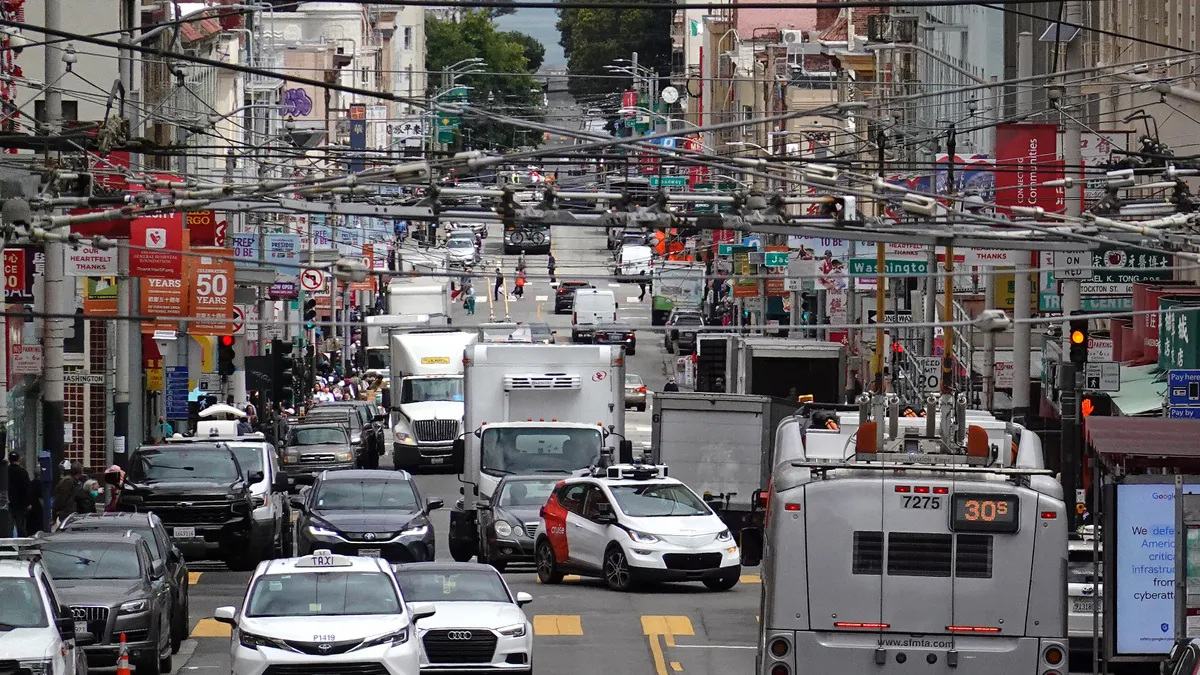Dive Brief:
- The California Public Utilities Commission voted Thursday to allow Cruise and Waymo to operate paid robotaxis without drivers throughout San Francisco despite objections from first responders and others in an open hearing.
- Commissioners voted 3-1 in favor of the two companies, allowing the self-driving vehicles to operate in ride-hailing service 24 hours a day.
- Observers believe this action could open the floodgates for the expansion of autonomous vehicles to many other cities, something Cruise has already announced in recent days.
Dive Insight:
Cruise, a subsidiary of General Motors, and Waymo, owned by Google parent company Alphabet, began operating robotaxis in limited areas of San Francisco in 2022. Cruise says it has completed more than 1 million driverless miles, and its vehicles were involved in 54% fewer collisions than human drivers in comparable circumstances. Waymo says on its website that it completed more than 1 million rider-only miles in January with only two reportable collisions and no injuries.
Some women, members of the LGBTQ+ community, vision-impaired people and people of color spoke at the hearing in support of robotaxis due to discrimination or other problems they’ve faced with human ride-hailing drivers. A speaker who self-identified as a gender-nonconforming person said, “I’ve experienced ride-share drivers who have left me on the side of the street and refused to open their vehicle. Drivers can discriminate against vulnerable populations, including queer, Black and trans folks far more than any computer.”
A Castro district resident said, “I feel much safer knowing that I’m riding in a judgment-free, discrimination-free, beer-free vehicle rather than one that you nervously navigate.”
Thrilled to announce that the California Public Utilities Commission just approved @Cruise for fared operation 24/7 across all of San Francisco!
— Kyle Vogt (@kvogt) August 11, 2023
It’s a huge milestone for the AV industry, but even more importantly a signal to the country that CA prioritizes progress over our…
In a statement posted Friday, Tekedra Mawakana, co-CEO of Waymo, said, “We’re incredibly grateful for this vote of confidence from the CPUC, and to the communities and riders who have supported our service.” Cruise CEO and co-founder Kyle Vogt posted Thursday night on X, formerly known as Twitter, that the CPUC’s decision is “a huge milestone for the AV industry, but even more importantly a signal to the country that CA prioritizes progress over our tragic status quo.”
Cruise autonomous vehicles are the subject of a preliminary investigation by the National Highway Traffic Safety Administration into reports of vehicles hard-braking, resulting in rear-end collisions, and stopping on the road, creating a danger for the rider and other vehicles. The San Francisco Fire Department, San Francisco Municipal Transportation Agency and others opposed the expansion of robotaxis. In a separate hearing Monday, San Francisco Fire Department Chief Jeanine Nicholson said, “They are still not ready for prime time because of the way they have impacted our operations,” citing 55 written reports of the robotaxis interfering with emergency responses.
Other opposition at the Thursday hearing came from taxi and other ride-hailing drivers, who feared the driverless robotaxis would put them out of work, and from labor leaders. In a statement issued Friday, Peter Finn, Teamsters Western Region vice president and secretary-treasurer of Teamsters Local 856, said that “The CPUC’s ruling is irresponsible and shows a complete disregard for public safety. In addition to ignoring the City’s nearly 70 reported safety incidents involving robotaxis this past year, it has completely bypassed the recommendations of public safety officials, including the San Francisco Fire Chief and Police Officers Association.”
Cruise operates robotaxis in Phoenix and Austin, Texas, in addition to San Francisco. In recent weeks, Vogt announced on X that Cruise will be coming to Miami; Nashville, Tennessee; and Atlanta. Waymo also serves Austin and the Phoenix metro area plus Los Angeles and San Francisco. It says on its website, “We look forward to expanding further.”















